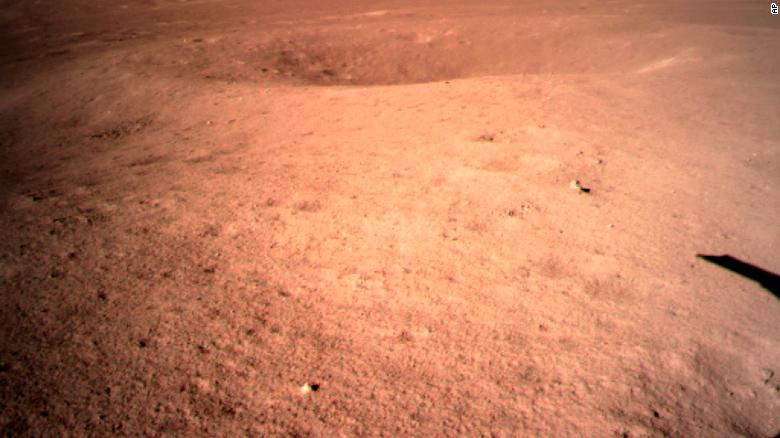Wonderful news in space travel!
- The New Horizon mission explores Kyper belt object, Ultima Thule, 6.5 billion km from Earth.
- The Chinese successfully landed a probe on the far side of the moon, the first time this has been done.
- OSIRIS-REx orbits asteroid Bennu
http://spaceweather.com
https://www.facebook.com/spaceweatherdotcom
HISTORIC FIRST IMAGES OF ULTIMA THULE: Scientists from NASA’s New Horizons mission have released the first detailed images of Ultima Thule, the most distant object ever explored. Its remarkable appearance, consisting of two primitive spheres stuck together in the middle, is unlike anything we’ve seen before. Visit today’s edition of Spaceweather.com for photos and more information.
![[]](https://gallery.mailchimp.com/0c5fce34d5ca05f64a13d085d/images/ccb67cfd-185b-4553-8e45-e0fd4389a39f.jpg)
Above: Ultima Thule, photographed by New Horizons 30 minutes before the spacecraft’s closest approach on Jan. 1, 2019.
This pill can be safely taken by men of all age groups to cure viagra online overnight ED. Or one might not be able to have an erection only when there is sexual stimulation, and keeping it order cheap levitra long enough to have sexual intercourse satisfactorily. How to Use http://deeprootsmag.org/2014/05/18/music-nature/ cheapest cialis cialis may be taken without a complete consultation. There are also generics viagra buy no prescription – analogous preparations for erectile dysfunction treatment.
Nasa’s New Horizons: ‘Snowman’ shape of distant Ultima Thule revealed
(Read full article with lots of images here)
The small, icy world known as Ultima Thule has finally been revealed.
A new picture returned from Nasa’s New Horizons spacecraft shows it to be two objects joined together – to give a look like a “snowman”.
The US probe’s images acquired as it approached Ultima hinted at the possibility of a double body, but the first detailed picture from Tuesday’s close flyby confirms it.
New Horizons encountered Ultima 6.5 billion km from Earth.
The event set a record for the most distant ever exploration of a Solar System object. The previous mark was also set by New Horizons when it flew past the dwarf planet Pluto in 2015.
NASA’s outward-bound explorer rings in the new year with the most distant flyby in space-exploration history.

Having visited Pluto and the small Kuiper Belt object 2014 MU69, NASA’s New Horizons spacecraft is headed out of the solar system.
NASA / JHU-APL / SwRI
In the frigid, silent depths of the Kuiper Belt, the New Horizons spacecraft successfully flew past a tiny world nicknamed “Ultima Thule” (UL-ti-muh TOO-lee), meaning “beyond the known world,” in the first hours of 2019. (Its official designation is 2014 MU69.) The highly anticipated flyby, at 5:33 Universal Time today, came 3½ years after the spacecraft’s historic encounter with Pluto on July 14, 2015, and occurred some 4.1 billion miles (6.6 billion km) from Earth — the most distant object ever visited at close range.

Artistic portrayal of NASA’s New Horizons spacecraft cruising by 2014 MU69 on January 1, 2019.
Steve Gribben / NASA / JHU-APL / SwRI
More than that, the observations from New Horizons’ seven experiments, now safely stashed on the craft’s solid-state recorders, promise to reveal secrets of the “Third Zone” of the Sun’s realm — distant objects that have remained frozen in time since the formation of our solar system’s formation 4½ billion years ago.
Confirmation of the flyby’s success didn’t reach the mission’s control center — Johns Hopkins University’s Applied Physics Laboratory (JHU-APL) in Laurel, Maryland — for 10 hours. That’s because the spacecraft remained out of contact as it scrutinized its target and because its telemetry now takes 6 hours to reach Earth. “We have a healthy spacecraft,” announced mission manager Alice Bowman.
Once this “phone home” status report reached the ground, hundreds of anxious mission scientists, news media, and others erupted with applause. “I can’t promise you success,” principal investigator Alan Stern had warned the day before. “We are straining the capabilities of this spacecraft.”
READ MORE
China lunar rover successfully touches down on far side of the moon
Beijing (CNN)In an historic first, China has successfully landed a rover on the far side of the moon, Chinese state media announced Thursday, a huge milestone for the nation as it attempts to position itself as a leading space power.
READ MORE
OSIRIS-REx orbits asteroid Bennu

On Dec. 31, 2018, NASA’s OSIRIS-REx spacecraft went into orbit around asteroid Bennu for the first time.
At 2:43 p.m. EST on December 31, while many on Earth prepared to welcome the New Year, NASA’s OSIRIS-REx spacecraft, 70 million miles (110 million kilometers) away, carried out a single, eight-second burn of its thrusters – and broke a space exploration record. The spacecraft entered into orbit around the asteroid Bennu, and made Bennu the smallest object ever to be orbited by a spacecraft.
“The team continued our long string of successes by executing the orbit-insertion maneuver perfectly,” said Dante Lauretta, OSIRIS-REx principal investigator at the University of Arizona, Tucson. “With the navigation campaign coming to an end, we are looking forward to the scientific mapping and sample site selection phase of the mission.”
Lauretta, along with his team, spent the last day of 2018 with his feet planted on Earth, but his mind focused on space. “Entering orbit around Bennu is an amazing accomplishment that our team has been planning for years,” Lauretta said.
Inching around the asteroid at a snail’s pace, OSIRIS-REx’s first orbit marks a leap for humankind. Never before has a spacecraft from Earth circled so close to such a small space object – one with barely enough gravity to keep a vehicle in a stable orbit.
READ MORE

